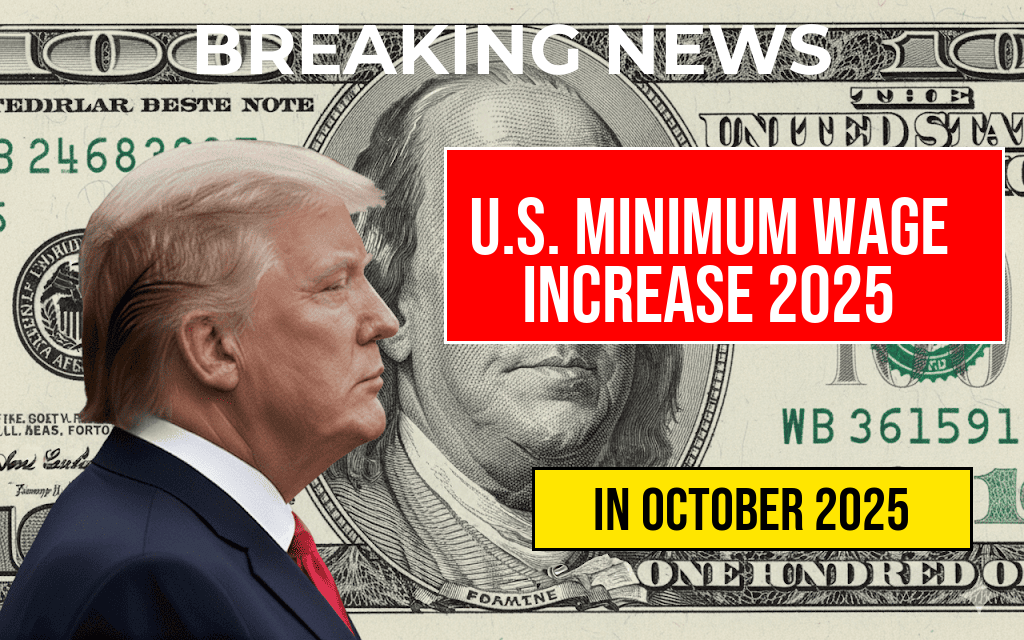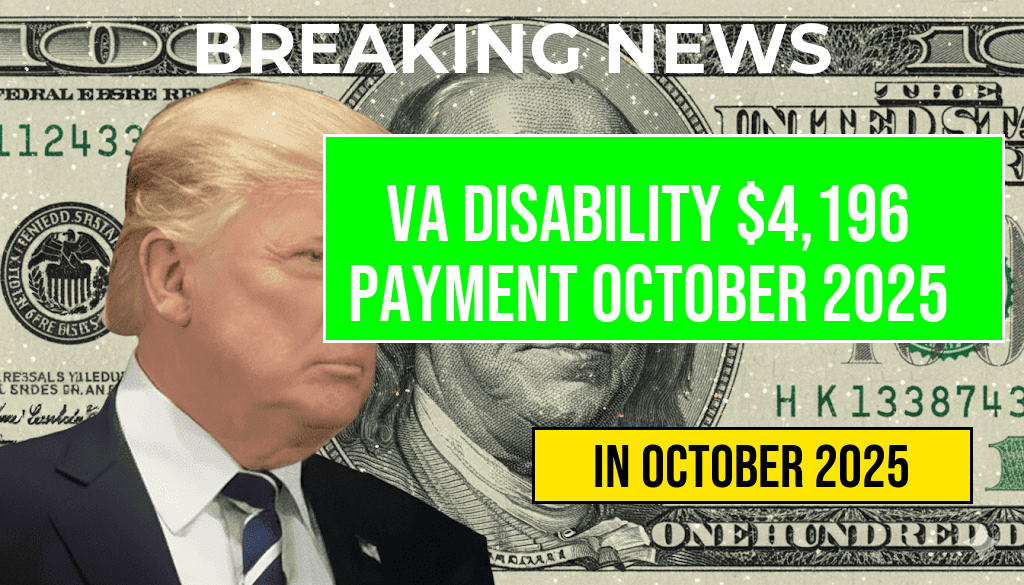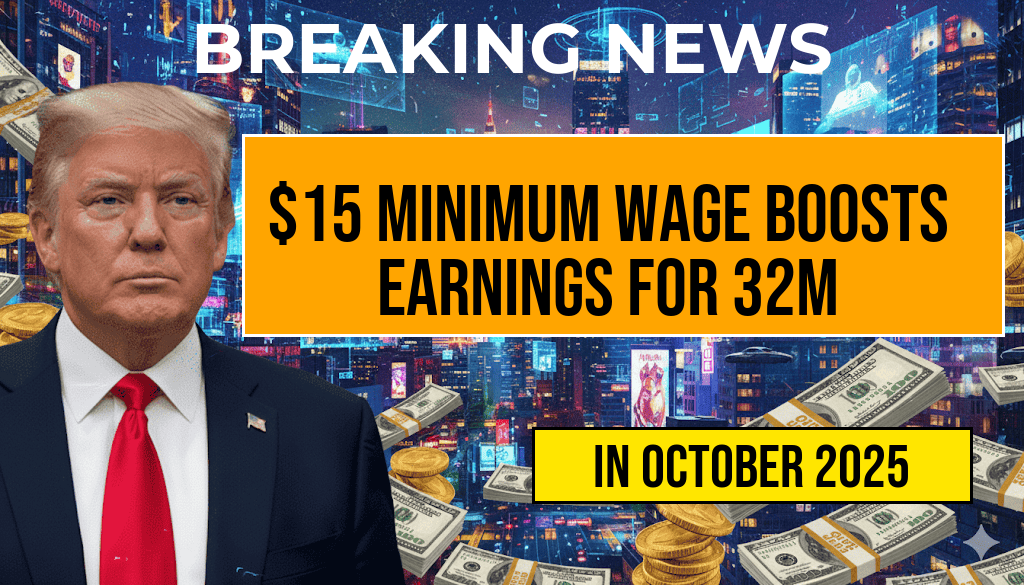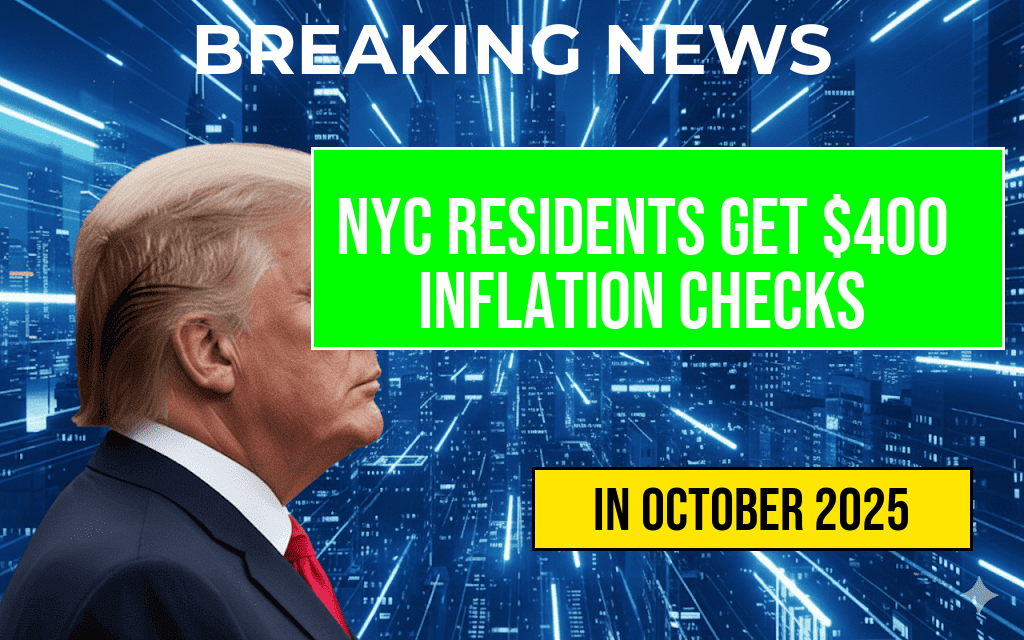Effective September 30, 2025, the minimum wage across various states and jurisdictions in the United States will see a significant increase, impacting millions of workers nationwide. This adjustment reflects ongoing efforts to keep pace with inflation and improve living standards for low-wage earners. The changes are rooted in legislation enacted over recent years, which tie minimum wage adjustments to economic indicators and regional cost-of-living adjustments. As a result, businesses, workers, and policymakers are preparing for a transition that could influence employment patterns, consumer spending, and regional economic dynamics. This article provides a comprehensive overview of the new hourly rates, highlighting key states, the phased implementation where applicable, and the broader economic context driving these adjustments.
Background on the Minimum Wage Increase
The push for raising the minimum wage has gained momentum over the past decade, with many states passing legislation to incrementally increase wages toward a living standard benchmark. The federal minimum wage, which has remained at $7.25 since 2009, is often supplemented or overridden by state-level policies. In recent years, several states have adopted their own scheduled increases, often tied to inflation or economic growth indices. The upcoming adjustment scheduled for September 30, 2025, is part of a broader national trend aimed at reducing income inequality and supporting low-income workers. According to Wikipedia’s overview of minimum wage laws, nearly 30 states have set minimum wages above the federal level, with some cities enacting their own higher standards.
States with Significant Wages Adjustments
Several states are implementing notable increases, with many adopting phased approaches to allow businesses time to adapt. The following list highlights key states and their new hourly minimum wages effective September 30, 2025:
States with Set Flat Rate Increases
- California: Increasing to $16.00 per hour from current rates of $15.50, aligning with ongoing legislative plans to reach $18.00 by 2026.
- New York: Raising to $16.50 per hour, up from $16.00, with further scheduled increases in upcoming years.
- Massachusetts: Jumping to $15.50 from $15.00, continuing their phased plan to reach $20.00 by 2028.
States with Tiered or Regional Adjustments
| State | New Hourly Rate | Previous Rate | Notes |
|---|---|---|---|
| Florida | $12.00 | $11.00 | Scheduled to reach $15.00 by 2026 |
| Nevada | $11.50 | $11.00 | Regional adjustments for urban areas |
| Washington | $15.74 | $15.74 | No change, but with scheduled increases for 2026 and beyond |
Impacts on Employers and Workers
Business owners, especially in retail, hospitality, and service sectors, are assessing the financial implications of these wage hikes. While higher wages can boost employee morale and reduce turnover, they may also lead to increased operational costs. Some small businesses might explore automation or adjust staffing levels to manage expenses. Conversely, workers earning at or near the new minimum wage could experience tangible improvements in disposable income, potentially stimulating local economies.
Labor advocates argue that these increases are essential for addressing wage stagnation and ensuring fair compensation. According to economic analyses from sources like Forbes, moderate wage hikes can contribute to increased consumer spending and economic growth, provided they are implemented thoughtfully.
Broader Economic Context
The scheduled increases come amid a complex economic landscape marked by persistent inflation, changing employment patterns, and regional disparities. Policymakers aim to balance the benefits of higher wages with potential risks like inflationary pressures or reduced employment opportunities for low-skilled workers. Some economists warn that rapid wage hikes could lead to increased automation or reduced hiring, while others emphasize the importance of ensuring a living wage in an evolving economy. The federal government continues to monitor these developments, with debates ongoing about whether to raise the federal minimum wage beyond $7.25.
For a detailed history of minimum wage policies and their economic effects, visit Wikipedia’s entry on U.S. minimum wage laws.
Looking Ahead
The adjustments scheduled for September 30, 2025, reflect a broader trend toward regional and state-specific approaches to wage policy. As the new rates take effect, stakeholders across the spectrum will be watching closely to assess economic impacts and workforce responses. Many experts suggest that these increases could serve as a catalyst for further reforms aimed at ensuring fair compensation across the country.
Frequently Asked Questions
What is the effective date of the new U.S. minimum wage rates?
The new U.S. minimum wage rates will become effective on September 30, 2025.
Which states are increasing their minimum wages as of September 30, 2025?
Several states across the U.S. are implementing new minimum wage rates starting on September 30, 2025. The article provides a complete list of these states and their respective hourly rates.
How do the new minimum wage rates vary across different regions?
The hourly rates vary depending on the state and region, reflecting local economic conditions and living costs. The article details the specific rates for each jurisdiction.
Are there any changes to minimum wages for specific types of workers or industries?
The update primarily addresses general minimum wages. However, some industries or worker categories may have different rates or exemptions, which are clarified in the full list provided.
How will the new minimum wage rates impact employers and employees?
The increase in minimum wages aims to improve employee earnings and maintain competitive labor costs for employers. Employers should prepare for adjustments in payroll and budgeting accordingly.






